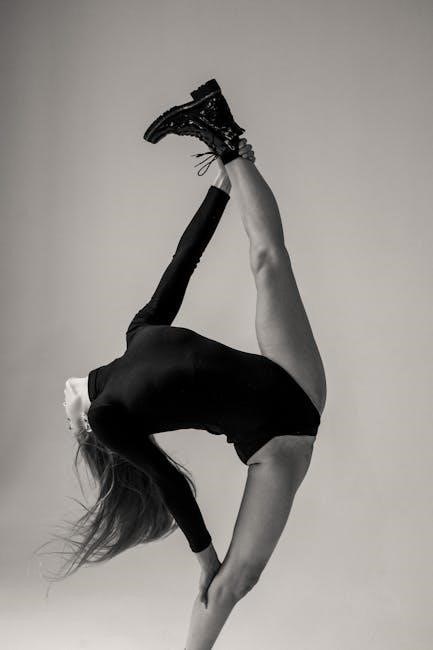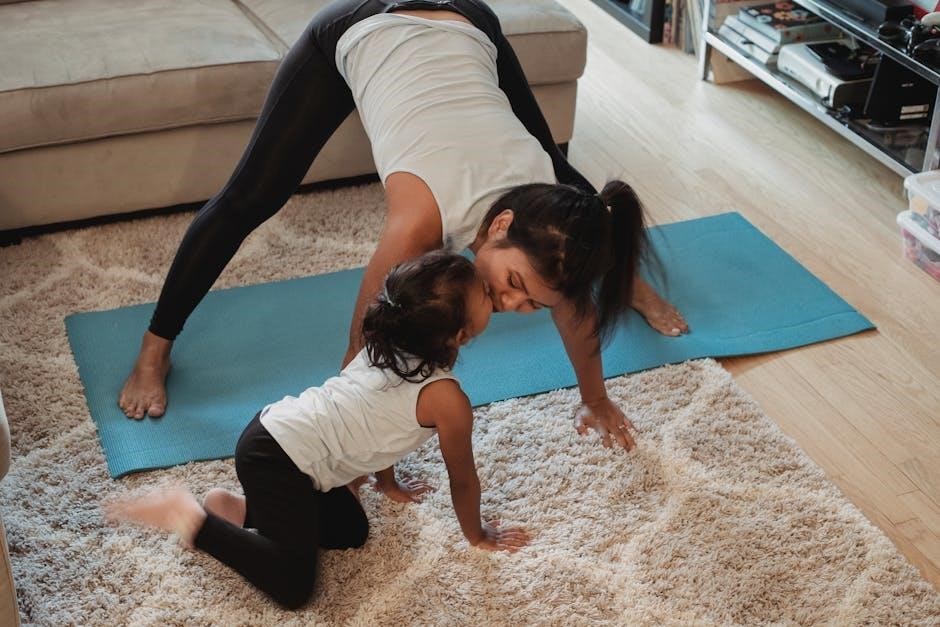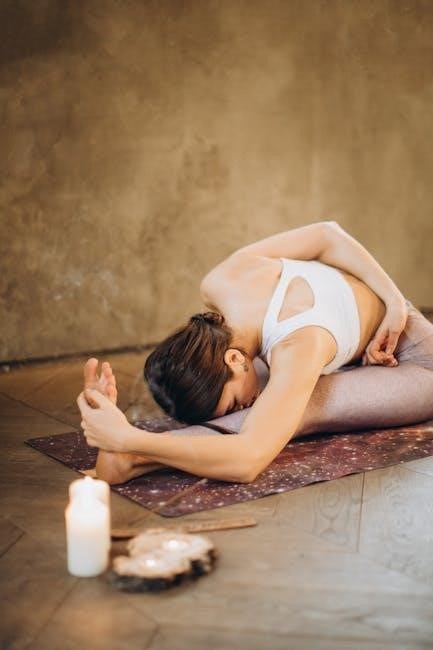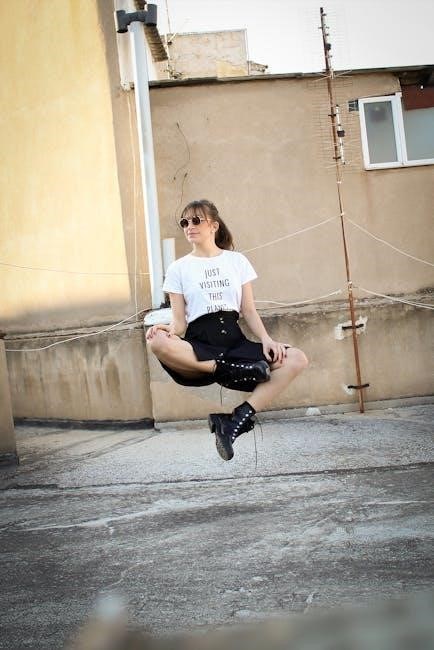Danner Boots are renowned for their exceptional comfort, durability, and precise fit, offering high-quality footwear for various needs. With models like Mountain Light, they ensure superior support and style.
Overview of Danner Boots
Danner Boots are a trusted brand known for their high-quality craftsmanship and durability, offering a wide range of styles to suit different needs. From hiking to work boots, Danner provides exceptional comfort and support. Their boots are designed with premium materials, ensuring long-lasting performance. Whether for rugged terrain or everyday wear, Danner boots are praised for their fit and reliability. The brand caters to various preferences, offering options like waterproofing, insulation, and customizable features. With a focus on both functionality and style, Danner has built a reputation for delivering footwear that meets the demands of active lifestyles. Their commitment to quality and comfort makes them a favorite among outdoor enthusiasts and workers alike, ensuring a perfect blend of durability and style for every occasion.
Importance of Proper Boot Fit
Proper boot fit is crucial for comfort, performance, and overall foot health. Ill-fitting boots can lead to discomfort, blisters, and even long-term foot issues. Danner boots are designed to provide superior support and durability, but these benefits are fully realized only with the correct fit. A well-fitting boot ensures even weight distribution, prevents slippage, and maximizes traction, especially on uneven terrains. Additionally, proper fit enhances the boot’s ability to withstand wear and tear, prolonging its lifespan. Whether for hiking, work, or casual wear, investing time in ensuring the right fit guarantees a more enjoyable and safe experience. Danner’s attention to detail in craftsmanship makes proper fit essential to unlocking the full potential of their boots.

Key Considerations Before Purchasing Danner Boots
Understanding your foot shape, trying boots on, considering width options, and evaluating the role of socks and orthotics are essential for a perfect fit and comfort.
Understanding Your Foot Shape and Size
Accurately determining your foot shape and size is crucial for a proper fit. Foot shapes vary—narrow, wide, or flat—and can affect how Danner boots feel. Measure your feet using a Brannock device or trace them on paper to gauge length and width. Consider whether you have high arches or flat feet, as this impacts comfort and support. Danner boots are known for their durability and comfort, but proper sizing is essential to avoid issues like blisters or tightness. Some users suggest trying boots in the afternoon, as feet tend to swell slightly during the day. Ensure you wear the same type of socks you plan to use with the boots for an accurate fit. This step helps in selecting the right size and style for your specific needs, ensuring optimal comfort and performance.
Trying Danner Boots On: What to Expect
When trying on Danner boots, expect a snug yet comfortable fit. Start by ensuring the heel fits securely with minimal slippage. The toe box should allow enough space for your toes to move without feeling cramped. Danner boots are known for their high-quality materials, which may feel stiff at first but will break in over time. Wear the same type of socks you plan to use with the boots to ensure an accurate fit. Pay attention to comfort while standing and walking, as this will indicate how the boots perform during extended use. If possible, try them on in the afternoon, as feet tend to swell slightly throughout the day. This helps ensure the best fit for all-day wear.
Width Options: How to Choose the Right Fit
Danner boots offer various width options to cater to different foot shapes, ensuring optimal comfort and performance. The standard widths include Narrow, Medium, Wide, and Extra Wide. To choose the right fit, consider the natural shape of your foot and how it sits inside the boot. If your foot spreads noticeably when standing, a wider option may be necessary. Conversely, narrower feet may benefit from a slimmer fit to prevent excessive movement. Danner’s width options are designed to accommodate both everyday wear and specific activities, such as hiking or work. Always test the width by walking and standing to ensure a balanced fit that avoids pressure points or slipping.
The Role of Socks in Boot Fit

Socks play a critical role in achieving the perfect fit for Danner boots. They not only provide cushioning and moisture management but also influence how the boot conforms to your foot. Thicker socks can take up extra space, while thinner ones allow for a snugger fit. When trying on boots, wear the same type of socks you plan to use with them, as this ensures an accurate fit. Moisture-wicking socks are ideal for hiking or work boots, as they prevent blisters and keep feet dry. Danner recommends considering sock thickness when selecting a size, as it can affect overall comfort and performance. Always test boots with your preferred socks to ensure the best fit and feel.
Orthotics and Insoles: Do They Affect Fit?
Orthotics and custom insoles can significantly impact the fit of Danner boots. These additions take up space inside the boot, potentially altering the overall fit. If you plan to use orthotics or insoles, it’s essential to factor them into your sizing decision. Danner boots are designed to accommodate standard insoles, but thicker or custom orthotics may require a half or full size adjustment. Always try boots on with your orthotics or insoles to ensure proper fit and comfort. Neglecting this step could lead to tightness or discomfort, affecting performance. For optimal results, choose boots with enough room to accommodate both your foot and the orthotic or insole.

Danner Boot Sizing Guide
The Danner Boot Sizing Guide helps ensure a perfect fit by providing detailed size charts and measurement tips, considering foot shape, size, and personal comfort preferences.
Standard Sizing vs. Danner’s Sizing Chart
While standard shoe sizing provides a general guide, Danner’s sizing chart offers a more precise fit by considering both length and width measurements. Danner boots are known for their consistent sizing, but variations can occur due to boot style and materials. The company’s sizing chart accounts for these factors, ensuring a more accurate fit. Unlike standard sizing, which may vary between brands, Danner’s chart is tailored to their specific designs, making it a reliable tool for choosing the right size. By referencing Danner’s chart, customers can avoid common fit issues and enjoy a more comfortable, true-to-size experience. This attention to detail sets Danner apart in ensuring optimal boot fit for every wearer.
How to Measure Your Foot Accurately
To ensure the best fit, measuring your foot accurately is crucial. Start by placing your foot on a flat surface, such as a piece of paper, while wearing the same thickness of socks you plan to wear with your boots. Trace the outline of your foot carefully, ensuring the pen is held perpendicular to the paper. Measure the longest point of your foot for length and the widest point across the ball for width. Use a ruler to record these measurements in inches or centimeters. For added accuracy, use a Brannock device, commonly found in shoe stores, to determine your exact size and width. This method ensures your Danner boots will fit comfortably and provide optimal support. Consistency in measurement is key to achieving the perfect fit.
Danner’s Half-Size Options: Do They Run True to Size?
Danner’s half-size options are designed to provide a more precise fit for individuals whose feet don’t conform to standard whole sizes. These half-sizes are intended to run true to size, offering additional comfort and support. However, the fit can vary slightly depending on the specific boot model and materials used. For example, boots with stiffer leather may feel snugger, while softer materials may stretch slightly over time. To ensure accuracy, it’s recommended to try on half-sizes with the same type of socks you plan to wear regularly. This approach helps determine whether the half-size meets your comfort expectations. Danner’s commitment to quality ensures that their sizing remains consistent across their product line. Always consider the break-in period when assessing fit, as this can impact how the half-size feels over time. Testing the boots during different times of the day, as feet tend to swell slightly, can also provide a more accurate fit assessment. By combining these factors, you can make an informed decision about whether Danner’s half-size options are the right choice for your foot shape and size.
Difference Between Men’s and Women’s Sizing
Danner boots offer distinct sizing for men and women, tailored to accommodate anatomical differences in foot shape and size. Men’s boots typically feature a roomier toe box and a wider overall fit, while women’s boots are designed with a narrower heel and a more tapered toe to match the average female foot shape. Both sizing charts are standardized separately, ensuring accuracy for each gender. However, individual foot shapes may vary, so it’s crucial to try boots on or refer to Danner’s size conversion charts for the best fit. The company provides specific guidelines to help customers transition between men’s and women’s sizes if needed. By understanding these differences, you can select the appropriate size for optimal comfort and support.

Comfort and Fit: What to Look For
Look for breathable materials, adequate cushioning, and a supportive insole for comfort. Ensure the boot flexes naturally and has a secure lacing system for a proper fit.
Break-in Period: What to Expect
The break-in period for Danner Boots is a crucial phase that ensures optimal comfort and performance. Known for their durability and quality, Danner Boots are crafted from premium materials such as full-grain leather, which offers excellent support but requires a short period to mold to your feet.
During this time, you may experience some stiffness or snugness, especially if you’re new to wearing high-quality leather boots. To ease the process, consider wearing thicker socks or applying leather conditioners to soften the material gradually.
Patience is key, as the boots will eventually conform to your foot shape, providing a comfortable and personalized fit. This initial effort ensures that your Danner Boots will deliver long-lasting comfort and support for years to come.
Heel Fit: Ensuring No Slippage
A proper heel fit is essential for comfort and performance in Danner Boots. The heel should feel snug but not overly tight, preventing slippage that can lead to discomfort or blisters. Danner Boots feature sturdy heel counters and cushioning to keep the heel secure. The lacing system also plays a role in maintaining a snug fit around the ankle. When trying on boots, wear the same type of socks you intend to use to ensure an accurate fit. Aim for a balance where the heel stays in place without feeling constricted. Walking around the store can help assess the heel fit during movement. A proper fit ensures all-day comfort and support, making Danner Boots ideal for various activities. Proper heel fit is crucial for optimal performance and comfort.
Toe Box: Importance of Space and Comfort
The toe box is a critical factor in ensuring comfort and preventing discomfort or injury. Danner Boots are designed with roomy toe boxes to allow natural toe movement, reducing the risk of blisters or toenail issues. A proper fit ensures your toes have enough space to wiggle without feeling cramped. If the toe box is too tight, it can lead to discomfort during long walks or hikes. Conversely, excessive space may cause slipping. When trying on boots, pay attention to how your toes feel—there should be no pressure or pinching. Danner’s boots often feature cushioned toe boxes for added comfort. Proper toe box fit enhances overall boot performance and ensures a pleasant experience. Always prioritize toe box comfort for optimal wearability and support.
Ankle Support: High vs. Mid vs. Low Boots
Ankle support is a vital aspect of boot fit, and Danner Boots offer varying levels depending on the style. High boots provide maximum ankle stability, making them ideal for rough terrains or heavy-duty work. Mid boots strike a balance, offering moderate support while maintaining flexibility, suitable for everyday wear or light hiking. Low boots prioritize comfort and mobility, with minimal ankle support, best for casual use or smooth surfaces. Choosing the right height depends on your activity and personal preference. Danner’s designs ensure that regardless of height, the boots deliver consistent comfort and durability. Proper ankle support enhances performance and reduces the risk of fatigue or injury, making it a key consideration when selecting your boots.

Danner Boot Models: Fit Differences
Danner offers various boot models, each with unique fit characteristics tailored to specific needs. From hiking to work boots, each style ensures optimal comfort and support.
Danner’s attention to detail in design guarantees a precise fit, catering to different activities and preferences while maintaining high-quality craftsmanship and durability in every model.
Danner Mountain Light and Light II: Fit Characteristics
Danner Mountain Light and Light II boots are renowned for their exceptional fit and durability. These boots feature a roomy toe box, ensuring comfort during long hikes, while the heel stays snug to prevent slippage.
The boots are designed with a standard fit, accommodating average foot shapes, and are true to size, making them ideal for hikers seeking reliability. The ankle support is moderate, offering stability without restricting movement, and the breathable materials keep feet dry in various conditions. The Vibram outsole enhances traction, further improving the overall fit experience for outdoor enthusiasts. These boots are a top choice for those prioritizing both comfort and performance in challenging terrains. Their consistent fit ensures a reliable experience, making them a favorite among hikers and outdoor enthusiasts.
Danner Work Boots: Fit and Comfort Features
Danner Work Boots are designed for durability and comfort, offering a snug, supportive fit ideal for demanding jobs. They feature a roomy toe box to prevent toe compression and a secure heel to minimize slippage. The boots are built with cushioned insoles and sturdy outsoles for shock absorption and traction. Danner’s work boots often include waterproof membranes and breathable liners, ensuring dryness and comfort in harsh conditions. Available in various widths, they cater to different foot shapes, and their durable construction provides long-lasting support. The boots are true to size, with a moderate break-in period, making them a reliable choice for workers needing both protection and comfort. Their robust design and ergonomic features ensure all-day wearability and performance.
Danner Hiking Boots: Fit for Different Terrains
Danner hiking boots are engineered for varying terrains, ensuring a secure and comfortable fit whether on trails, rocky surfaces, or wet environments. They feature waterproof membranes, durable outsoles with aggressive tread patterns, and ankle support tailored for stability. The boots are designed with a roomy toe box for comfort during long hikes and a snug heel to prevent slippage. Danner’s hiking boots come in different heights, offering options for ankle mobility or added support. The fit is consistent with Danner’s sizing chart, and they accommodate thick hiking socks. Orthotics can be added for personalized support without compromising the boot’s integrity. With their rugged construction and ergonomic design, Danner hiking boots deliver reliability and comfort across diverse outdoor conditions.
Danner Casual Boots: Fit for Everyday Wear
Danner casual boots are designed for everyday wear, blending comfort and style seamlessly. They feature soft, durable leathers and cushioned insoles for all-day comfort. The fit is relaxed yet supportive, with a roomy toe box and snug heel to prevent slippage. Danner’s casual boots are lightweight, making them ideal for urban environments and casual outings. They often include flexible outsoles for natural movement and versatility. The sizing remains consistent with Danner’s sizing chart, ensuring a reliable fit. These boots pair well with jeans or dress pants, offering a versatile option for daily use. With their timeless designs and comfortable fit, Danner casual boots are perfect for those seeking durability and style without compromising on comfort.

Tips for a Perfect Fit

Choose the right size by trying boots on later in the day, wearing similar socks, and ensuring a snug yet comfortable fit while standing.

How to Test Boots Before Purchase
Testing boots before purchase is crucial for ensuring the perfect fit. Start by trying them on in the afternoon, as feet tend to swell throughout the day. Wear the same type of socks you plan to use with the boots. Stand up and walk around to assess comfort and support. Check for heel slippage by ensuring a snug fit without tightness. Press your thumb into the toe box to verify adequate space for your toes. If possible, test the boots on both feet, as foot sizes can differ slightly. Pay attention to any pressure points or discomfort. Finally, consider the break-in period and how the boots will feel after extended wear. This thorough testing ensures a comfortable and functional fit for your Danner boots.
Walking and Standing: Testing Fit
Walking and standing are essential steps in testing boot fit. When walking, pay attention to how your feet move within the boots. Ensure there’s no excessive heel slippage or tightness in the toe box. The boots should flex naturally with your stride without causing discomfort. While standing, check if the weight distribution feels balanced and if the arch support aligns with your foot’s natural curve. Shift your weight slightly to test for any pressure points or hotspots. This helps confirm whether the boots provide consistent comfort during movement and rest. Proper fit should feel stable and supportive, allowing you to walk and stand confidently without distractions.
Temperature and Fit: How Heat Affects Boots
Temperature can influence boot fit, as heat causes materials to expand slightly. On warmer days, boots may feel tighter due to natural foot swelling and material softening. Conversely, in colder conditions, boots might feel looser. To ensure proper fit, test boots in varying temperatures or during the afternoon when feet tend to be slightly larger. Consider the thickness of socks, as heavier ones can occupy more space. Danner boots, made from high-quality materials, are designed to maintain shape and comfort across temperatures. However, extreme heat can still impact fit, so it’s wise to account for these changes. Proper fit should remain consistent regardless of environmental conditions for optimal performance and comfort.

Common Mistakes to Avoid
Common mistakes include not trying boots on, ignoring sizing charts, and assuming size consistency across brands. Always test fit and prioritize comfort over style.
Not Trying Boots On Before Purchase
Not trying boots on before purchasing is a common mistake that can lead to poor fit and discomfort. Danner Boots, like all footwear, vary in fit due to materials, design, and personal foot shape. Assuming your size remains consistent across brands or models can result in boots that are too tight or too loose. This oversight can cause blisters, discomfort, or even long-term foot issues. Trying boots on allows you to assess heel fit, toe box space, and overall comfort. Additionally, factors like sock thickness and orthotics can influence fit, making it crucial to test boots in person. Always prioritize a hands-on try-on to ensure the best fit and performance for your needs.
Ignoring Sizing Charts and Reviews
Overlooking sizing charts and customer reviews is a significant oversight when purchasing Danner Boots. Sizing charts provide precise measurements tailored to Danner’s specific designs, ensuring the best fit. Reviews offer real-world insights into how boots perform, highlighting comfort, durability, and any fit inconsistencies. Ignoring these resources can lead to purchasing boots that are too tight or too loose, causing discomfort and potentially requiring returns. Additionally, Danner’s sizing may differ from other brands, and reviews often address these nuances. By dismissing this information, you risk compromising both fit and performance. Always consult sizing guides and read reviews to make an informed decision and ensure your boots meet your needs for comfort and functionality.
Not Considering Personal Comfort Preferences
Personal comfort preferences are crucial when selecting Danner Boots, as they directly impact wearability and satisfaction. Ignoring factors like cushioning, flexibility, and breathability can lead to discomfort, especially during extended wear. For instance, individuals who prioritize soft insoles or moisture-wicking liners may find boots lacking these features unsuitable. Similarly, those who prefer a snug fit versus a roomy design might face issues if their preference isn’t considered. Neglecting these aspects can result in foot fatigue, blisters, or even long-term foot problems. Always assess your comfort needs based on your lifestyle and activity type to ensure the boots align with your expectations for all-day wearability and performance.
Final Thoughts on Danner Boot Fit
Proper fit is essential for comfort, durability, and performance in Danner boots. By understanding your foot shape, trying boots on, and considering factors like socks and orthotics, you can ensure a perfect fit. Danner offers a range of sizes and widths to accommodate different needs, and their half-size options provide additional customization. Remember, everyone’s feet are unique, so personal comfort preferences should guide your decision. Don’t rush the process—take time to test boots thoroughly. Trust Danner’s reputation for quality and follow this guide to make an informed purchase. Your feet will thank you for prioritizing a comfortable, well-fitting boot that meets your lifestyle demands.
Encouragement to Follow the Guide
Investing time in finding the perfect fit for your Danner boots is worth the effort. Proper fit ensures comfort, prevents discomfort, and enhances performance. By following this guide, you can make an informed decision tailored to your needs. Danner’s reputation for quality and durability is unmatched, but only with the right fit will you truly appreciate their craftsmanship. Don’t hesitate to explore different sizes, widths, and styles until you find your ideal pair. Your feet deserve the best, and with this guide, you’re equipped to make the right choice. Take the extra steps to ensure your boots feel great from day one—your comfort and satisfaction depend on it.



About the author